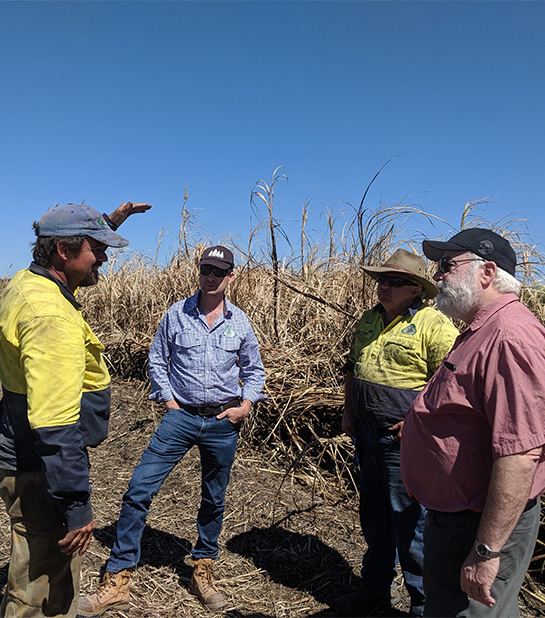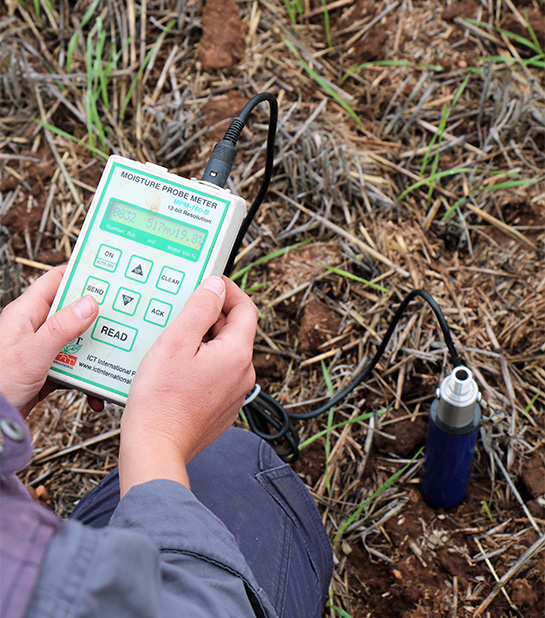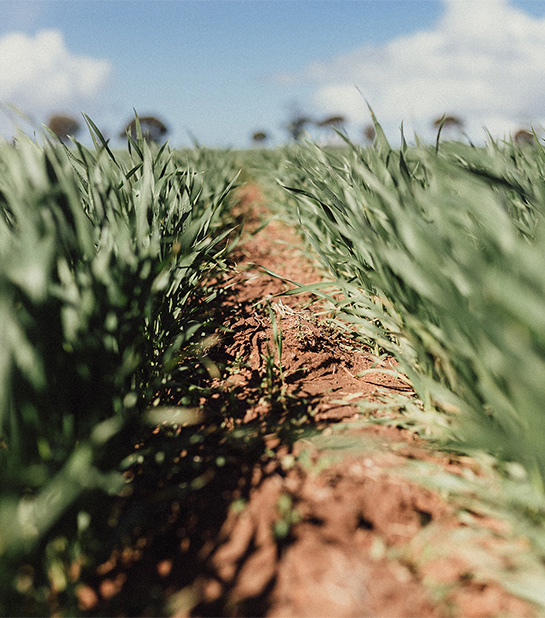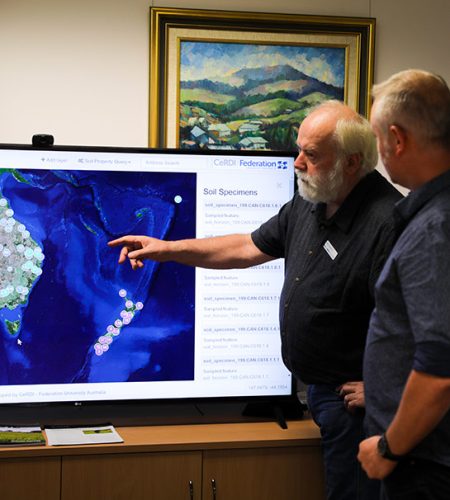Key Points
- Visualising Australasia’s Soils (VAS) aims to make Australasian soils data visible and reusable.
- Engagement with the farming groups has helped clarify motivations and aspirations for the VAS system.
- The design of the system architecture has been based on the use-cases.
- At the end of the first phase, 12 of the 16 participants have provisioned 827 soil sites at which approximately 4384 samples were taken with about 77,332 soil observations.
- The soil data portal was launched in December 2019 and the current public view shows some of the 1628 open public sector soil datasets available.
- The next challenge is to show more of the public soils data in a relevant way and encourage the public data custodians to improve their data stewardship.
The Challenge
How can we best utilise the vast amounts of soil data – much of which is from the private sector and collected by sensors or precision agriculture techniques – for decision support and best soil management practice?
This project addresses the rapid increase in soil data supply, big data and its transformation into knowledge.
The Soil CRC is in a unique position to improve Australian agricultural profitability by collating soil data from disparate sources and making it FAIR (findable, accessible, interoperable, and reusable). Our aim is to supply federated, harmonised, and standardised soil data and modelled derivatives to the agricultural industries.
The challenges are considerable, particularly in finding the value in the data and resolving the social (sorting out ownership, licensing, data access conditions) and technical architecture.
The Opportunity
Digital agriculture has the potential to increase the gross value of Australian agricultural production by $20.3 billion (25% increase on 2014-15 levels), however it relies on access to good and well-managed data.
The VAS project has the potential to provide interoperable access to open data (typically government and research data), data from Soil CRC members and programs (e.g. grower groups, farmer data co-operatives, research organisations), and industry supplied data. Access to these data will greatly benefit Soil CRC research and industry partners by ensuring that all research builds on the best available and most current data sets.
Our Research
Following extensive consultation among project participants, we identified the following project aims:
- Manage data to organise and standardise format, ensure secure data storage, provide easy data access, and facilitate data viewing for local, regional, state, or national contexts.
- Collate data to view farm-scale and region-scale activities and projects, historical and current, by theme; facilitate regional benchmarking; avoid data duplication; see trends over space and time; and direct new work based on existing data, or lack thereof.
- Apply data as evidence for funding applications, in reports on completed projects, to implement new ideas, and to underpin on-farm decision making.
- Engage with members to improve understanding of data and analysis.
- Collaborate and connect with a range of experts to assist with problems and innovation, and learn what other growers and groups are doing.
These use-cases set the social and technical architecture of the VAS system, which is based on a federated model, in which the custodians maintain control over their data and share them according to the access rules that they set. We have developed a governance and stewardship framework to help inform the Soil CRC, and have published our social engagement findings (Sexton 2020). The technical architecture is based on open-source software and international data interoperability standards, and includes a cloud-based data aggregator for participants’ soil data.



Outcomes
Significantly, our research has demonstrated that Australasian soils data can be usefully brought together in a federation system that is accessible via a soil data portal.
Within this federation of data custodians, farmer groups and catchment managers have found value in a trusted, supported, web-based spatial soil data management system that suits their purposes and is relevant to their location. However, many still do not see the value in sharing their data with others in the Soil CRC.
Value Proposition
The soil data portal was launched in December 2019 and the current public view shows some of the key open public sector soil datasets that are available. The portal is a demonstration that Australasian soil data from all sectors can be brought together in a single view. The value of that to digital agriculture can now be explored.
Research engagement with the farming group partners has directed the design of the VAS system based on their use-cases. The resulting federated data supply model includes a cloud-based data aggregator for participants soil data. This research demonstrates the potential value in providing users with a trusted, supported, web-based spatial soil data management system.

